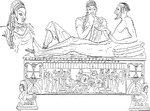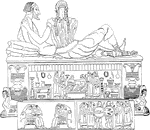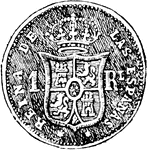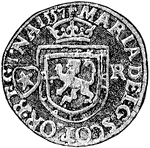
Plack
The back of a Scotch billon coin worth about two thirds of the United States cent in the fifteenth century.

Warty Dodder
A plant found throught the tropical regions of the world. It consists of thin leafless stems.
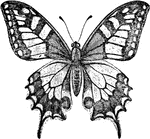
Old World Swallowtail Butterfly
Papilio Machaon, also known as the Old World Swallowtail. A yellow butterfly with black wings and a…

Bombycina
"Nocturnal moths, with the organs of the mouth in many cases so atrophied as to be unfit for use. These…

Bombycina
"Nocturnal moths, with the organs of the mouth in many cases so atrophied as to be unfit for use. These…

Bombycina
"Nocturnal moths, with the organs of the mouth in many cases so atrophied as to be unfit for use. These…

Bombycina
"Nocturnal moths, with the organs of the mouth in many cases so atrophied as to be unfit for use. These…

Common Pompano
A fish with a blunt snout and fins free of spines. Color is uniformly blueish above without dark bands…

Indian Pompano
A pompano with a high rounded back, rather large and smooth scales, and a nearly double dorsal, the…

Porgy
A fish native to the Mediterranean and Alantic waters. Usually silver in color and rosy on its back.

Harrison's Going-Ratchet
"The click barrel-ratchet R is set upon another larger ratchet-wheel, with its teeth pointing the opposite…

English House Clock
"A front view of a common English house clock with the face taken off, showing the repeating or rack…

Prairie Dogs
A rodent that live sunderground on prairies. They are about a foot long, very stout, squat, paunchy…

Prawn
A small crustacean about 3 to 4 inches in length and marketed in vast numbers. Ate throughout the world.

Quarter Clock
"The front view of a large quarter clock of Sir E. Beckett's design, with all the wheels on the great…

Great Diving Beetle
Dytiscus Harminieri, a genus of predatory, diving beetles that usually live in wetlands and ponds.

Great Diving Beetle
Dytiscus Harminieri, a genus of predatory, diving beetles that usually live in wetlands and ponds.

Pschent
A sovereign crown of Egypt, composed of the tall pointed miter, or white crown, of southern Egypt, combined…

Dannebrog
"The cross of the Danisn order of the Dannebrog, a white cross surmounting a red one, with the royal…

Crown
"The crown of William I and his successors was a plain circlet heightened with four spikes having trefoil…
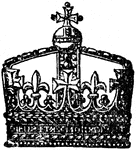
Crown
"Drawn from the royal achievement of Henry VII, sculptured with great spirit above the south entrance…
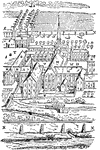
Bird Eye View of Citeaux
A. Cross, B. Gate-house, C. Almonry, D. Chapel, E. Inner gate-house, F. Stable, G. Dormitory of lay…

Genet
"A genus of carnivorous mammals belonging to the Viverridae or family of civets. It contains six species,…

Zenith Telescope
"The instrument is supported on a strong tripod, fitted with levelling screws; to this tripod is fixed…
Sluice
"One of the simplest forms of sluice as used in river diggings in the north-west of America. A rectangular…
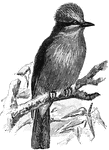
Vermilion Flycatcher
In the males, they have a full globular crest, and the hole under parts flaming red, the back, wings,…

Interior of Trajan's Bascilica
"Interior view of Trajan's Basilica, as restored by Canina." — Encyclopediia Britannica, 1910

Basilica of Old St Peter
"Sectional view of the old Basilica of St. Peter, before its destruction in the 16th century." —…

Helix Descrtorun
"Many species hibernate. The land-snails bury themselves in the ground, or conceal themselves under…

Horse Molar
"Side view of second upper molar tooth of Anchitherium (brachyodont form)." — Encyclopedia Britannica,…

Horse Skull
"Side view of skull of horse, with the bone removed so as to expose the whole of the teeth. PMx, premaxilla;…
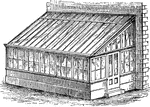
Plant House
"The glass roof is commonly designed so as to form a uniform plane or slope from back to front in lean-to…
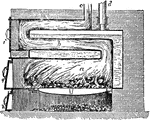
Saddle Boiler
"The fire is made under the principal arch a; the flame and smoke return through the flue b, and then…
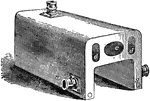
Gold Medal Boiler
"The Gold Medal Boiler is perhaps one of the best of these modified saddles, and like the others has…

Gold Medal Boiler
"The Gold Medal Boiler is perhaps one of the best of these modified saddles, and like the others has…
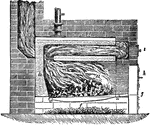
Gold Medal Boiler
"The Gold Medal Boiler is perhaps one of the best of these modified saddles, and like the others has…
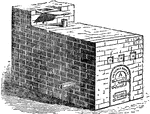
Gold Medal Boiler
"The Gold Medal Boiler is perhaps one of the best of these modified saddles, and like the others has…
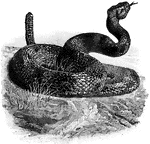
Rattlesnake
A venomous serpent whose tail ends in a rattle. It rattles its tail to warn potential predators to back…
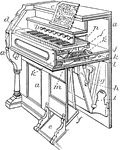
Reed Organ
A musical instrument consisting essentially of one or more graduated sets of smll free reeds of metal,…
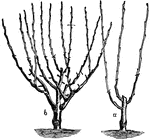
Dwarf-Tree Pruning
"This image gives a good idea of how these drawf trees are to be manipulated, a showing the first year's…

Pyramid Pruning
"a shows a young tree with its second year's growth, the upright shoot of the maiden tree having been…
Pruning
"The nature of the cut itself in pruning is of more consequence, especially in the case of fruit trees,…

Pruning
"The nature of the cut itself in pruning is of more consequence, especially in the case of fruit trees,…
Pruning
"The nature of the cut itself in pruning is of more consequence, especially in the case of fruit trees,…
Pruning
"The nature of the cut itself in pruning is of more consequence, especially in the case of fruit trees,…
Pruning
"The nature of the cut itself in pruning is of more consequence, especially in the case of fruit trees,…
Pruning
"The nature of the cut itself in pruning is of more consequence, especially in the case of fruit trees,…

Water Wheel
"When a water fall ranges between 10 and 70 feet, and the water supply is from 3 to 25 cubic feet per…




